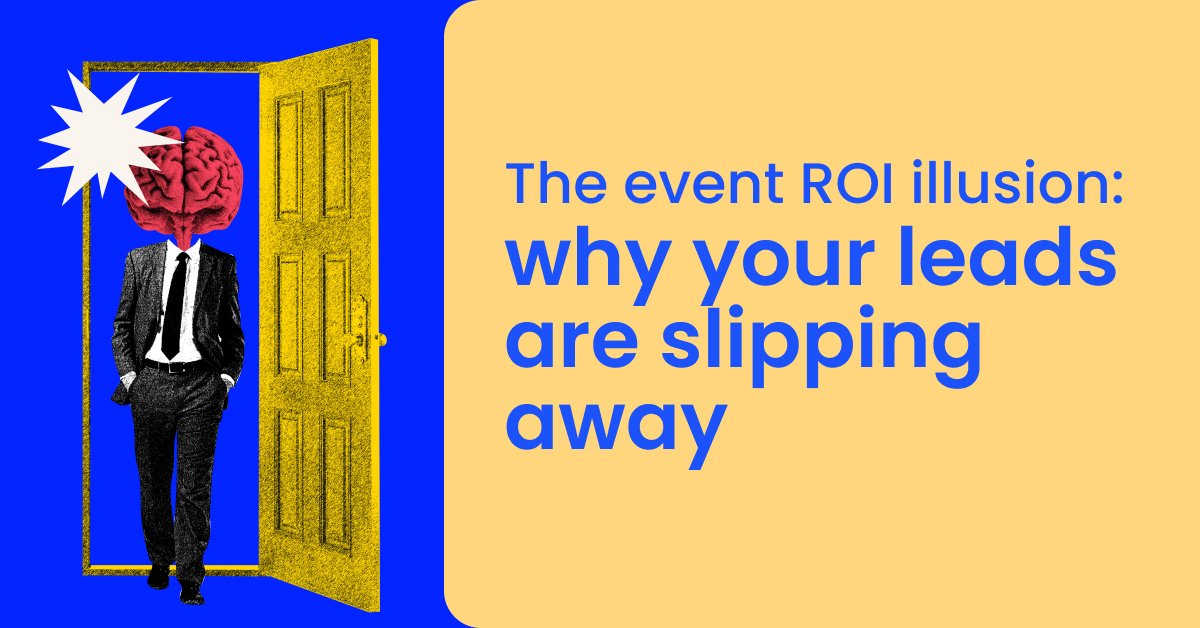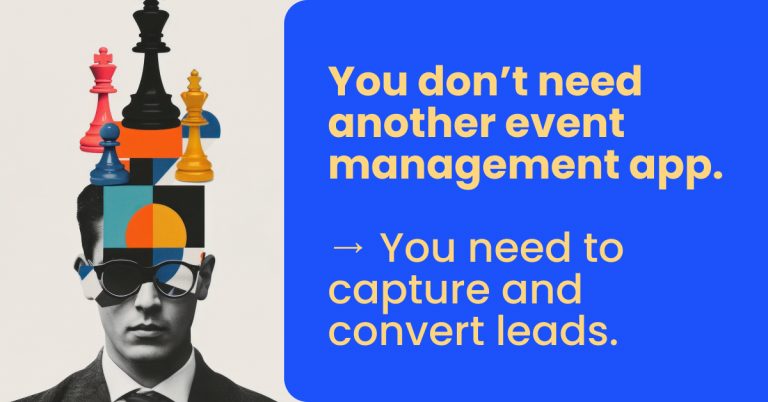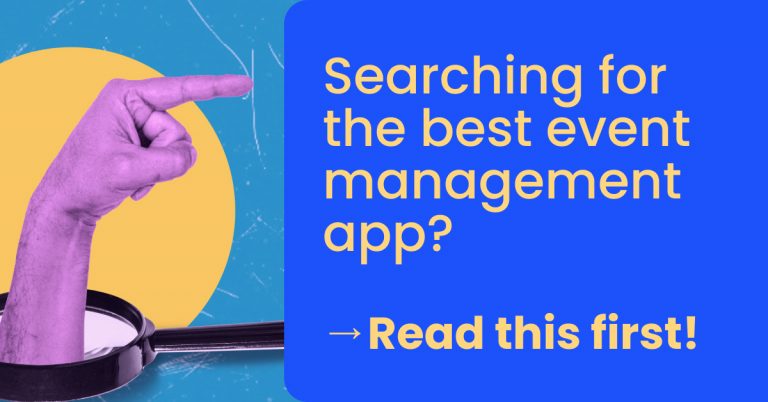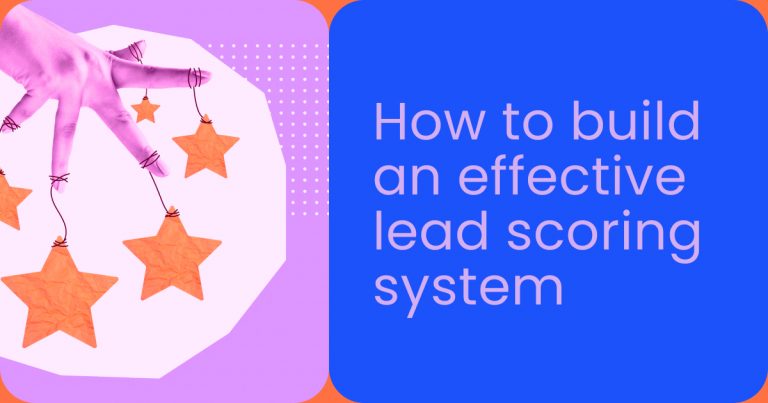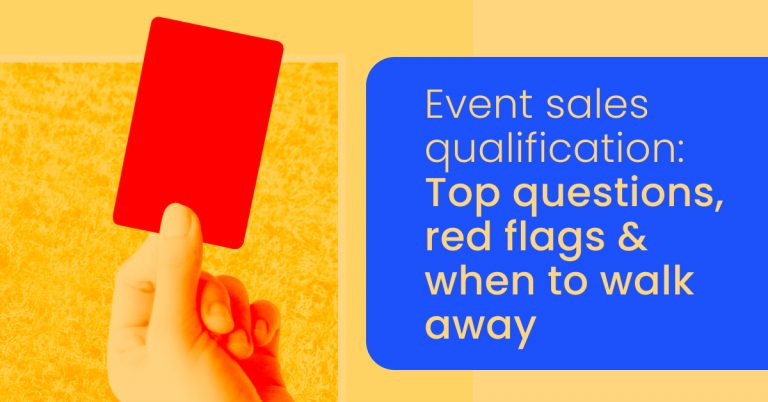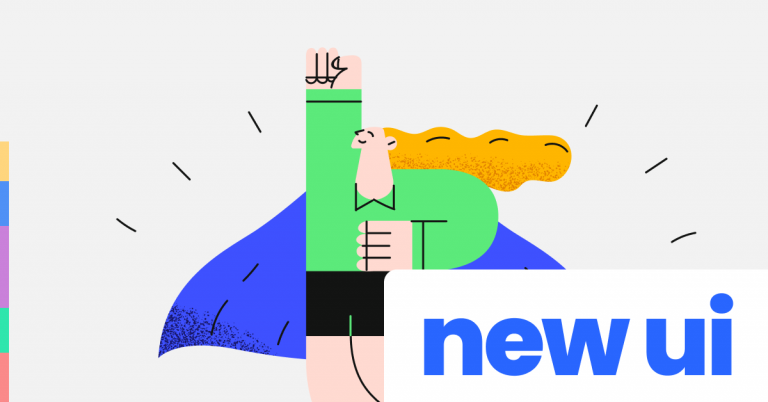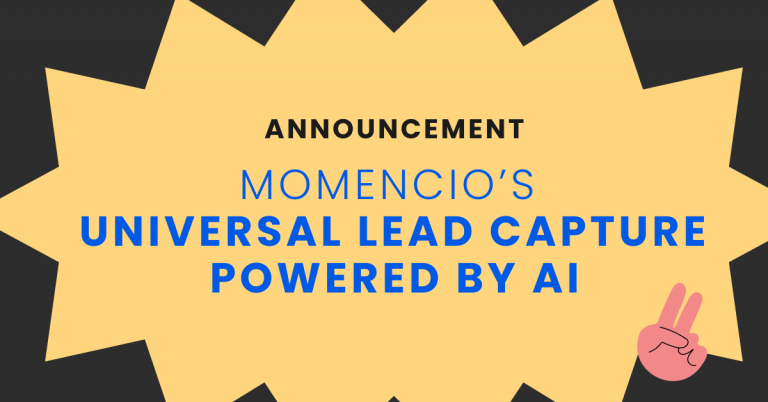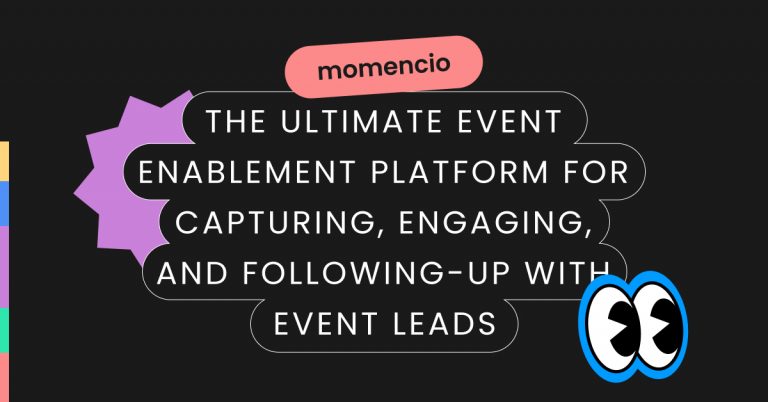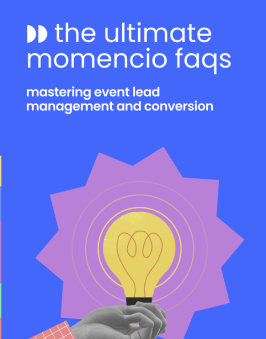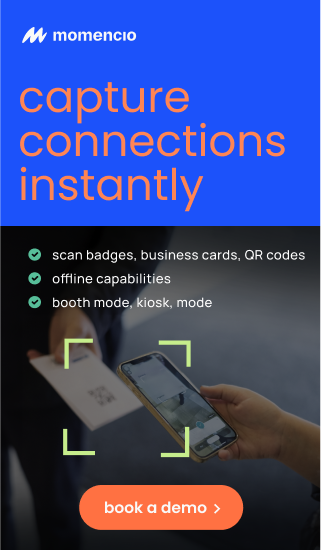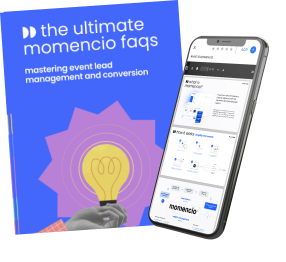TL;DR
Most event marketers focus on collecting leads, but the real challenge is converting them into actual sales. 79% of event-generated leads never receive follow-ups, leading to lost opportunities and wasted investments.
- Lead volume ≠ ROI: Many event teams celebrate high lead numbers, but without proper follow-up, they mean nothing.
- Delayed follow-ups kill conversions: Leads contacted within 48 hours are 7x more likely to convert.
- Unqualified leads slow sales: Without segmentation, sales teams waste time chasing poor-fit prospects.
- One email isn’t enough: A structured, multi-channel follow-up plan (email, LinkedIn, phone) drives engagement.
- Track the right metrics: Instead of booth traffic, focus on lead-to-opportunity rates and sales pipeline impact.
To maximize event ROI, companies need real-time lead tracking, smart segmentation, and proactive engagement—not just a long contact list.
Introduction
The end of an event isn’t the finish line—it’s the starting point for turning new connections into actual business. Many companies make the mistake of assuming that a long list of leads equals event success. But without a structured follow-up plan, most of those leads fade into missed opportunities.
Trade shows and conferences create a temporary surge of interest, yet 79% of event leads never receive proper follow-up. Delays in outreach, generic messaging, and unqualified contacts result in lost revenue and wasted marketing efforts. The companies that succeed aren’t the ones with the most leads—they’re the ones who know how to act fast, personalize engagement, and guide prospects seamlessly through the sales pipeline.
A lead list alone won’t generate ROI—strategic post-event execution will. Understanding where leads go, why they get lost, and how to keep them engaged is the key to transforming event participation into measurable business growth.
The great event ROI illusion: Why lead numbers don’t equal success
Many event marketers and exhibitors equate high lead volume with event success. It’s an understandable assumption—after all, a bustling booth and a long contact list feel like clear indicators of ROI. But raw lead numbers alone don’t translate to real business outcomes. Without a well-structured post-event strategy, most of those leads can end up as wasted opportunities.
1. The false sense of success: Why more leads don’t mean more revenue
Trade shows and industry events generate excitement, but not all attendees are serious buyers. Some leads may be attending for research, networking, or casual browsing rather than actual purchasing intent. According to a study by CEIR, only 20% of trade show attendees have immediate buying plans, while the rest are in early or exploratory stages.
2. Unqualified leads create bottlenecks for sales teams
When marketing teams pass all collected leads to sales without qualification, sales teams waste time chasing unqualified prospects instead of focusing on those with real buying intent. This misalignment leads to frustration and inefficiency.
How to fix it:
- Use lead scoring to prioritize high-intent prospects based on engagement levels at the event.
- Segment leads into categories: hot (ready to buy), warm (interested but needs nurturing), and cold (low engagement, longer-term potential).
- Provide context—ensure sales teams know how each lead interacted at the event (e.g., product demos attended, content downloaded, booth interactions).
3. The ‘list and forget’ problem: Poor follow-up execution
79% of event-generated leads never receive proper follow-up. Many companies focus on lead capture but fail to implement timely, structured follow-up plans, leading to lost opportunities.
Best practices for effective follow-ups:
- First follow-up within 24–48 hours to capitalize on event momentum.
- Personalized outreach—mention specific conversations or sessions attended.
- Multi-channel engagement—email, LinkedIn, and phone calls to reinforce messaging.
4. Measuring the wrong metrics: Vanity vs. real ROI
Many companies track event success based on surface-level metrics like lead volume, booth traffic, or social media engagement. While these provide some insight, real success is determined by lead quality, conversion rates, and revenue impact.
What to track instead:
- Lead-to-opportunity conversion rate—how many leads actually enter the sales pipeline.
- Time-to-close—how long it takes to convert an event lead into a customer.
- Event ROI—revenue generated vs. event costs.
Final takeaway: Shift the focus from quantity to quality
Event success isn’t about collecting the most leads—it’s about capturing and converting the right leads. Companies that integrate real-time lead scoring, structured follow-ups, and CRM automation can dramatically improve post-event conversion rates. Simply put, lead numbers alone are an illusion; what matters is what happens next.
Where do leads go? Understanding the post-event black hole
Every event ends with a list of leads, but what happens next? Without a structured post-event strategy, many of those hard-earned contacts disappear into what we call the ‘post-event black hole.’ Leads that aren’t nurtured quickly become cold, leaving sales teams frustrated and marketing efforts wasted.
1. The disappearing act: Why most leads go uncontacted
Shockingly, a research found that 79% of event-generated leads never receive a follow-up. Why? Many companies focus so much on capturing leads at the event that they fail to plan for post-event engagement.
Where leads are lost:
- No clear follow-up process in place.
- Leads get dumped into a CRM without segmentation or prioritization.
- Sales teams overwhelmed with generic, unqualified leads.
- Lack of automation, causing follow-ups to be delayed or forgotten.
2. Delayed follow-ups kill conversion rates
Timing is critical. Studies show that leads contacted within 24–48 hours of an event are 7x more likely to convert compared to those contacted a week later. Yet many companies wait too long, assuming leads will remember them weeks later. By then, interest has faded, competitors have reached out first, and your brand has become just another forgotten name in their inbox.
How to prevent delays:
- Automate your first follow-up email within hours, not days.
- Ensure sales teams receive pre-qualified leads with engagement details.
- Set clear follow-up SLAs (Service Level Agreements) between marketing and sales.
3. The danger of treating all leads the same
Not all leads are equal. Some attendees are actively searching for a solution, while others are simply collecting brochures. Failing to segment leads properly results in wasted time and missed opportunities.
How to segment effectively:
- Hot leads: Attendees who requested a demo, attended a product session, or showed high interest—contact immediately.
- Warm leads: Engaged visitors who interacted at the booth but didn’t express urgency—nurture with content.
- Cold leads: Passive visitors who provided information but showed little interest—place into long-term nurturing.
4. Poor handoff between marketing and sales
A common reason leads get lost is a disconnect between marketing and sales. If sales teams don’t have enough context on the leads they’re following up with, engagement drops.
How to fix the marketing-to-sales handoff:
- Use CRM integration to track and share lead interaction data from the event.
- Assign lead ownership before the event so follow-ups are planned.
- Ensure sales teams receive detailed notes about each lead’s booth activity.
5. The “one-and-done” follow-up mistake
Sending one generic follow-up email isn’t enough. Many companies assume that if a lead doesn’t respond immediately, they’re not interested. The reality? Most deals take multiple touchpoints.
How to create an effective follow-up sequence:
| Follow-up stage | Action |
| Day 1–2 | Send a personalized email + LinkedIn connection request. |
| Day 3–5 | Follow up with an additional resource (case study, white paper). |
| Week 2 | Call or send a video message for a warmer touchpoint. |
| Week 3+ | If no response, shift to long-term nurturing (newsletters, educational content). |
Final takeaway: Don’t let leads disappear into the void
Without a structured follow-up plan, your leads will fall into the post-event black hole—lost, forgotten, and never converted. The best companies prevent this by using lead segmentation, automation, and multi-channel engagement to ensure every prospect is nurtured from event interaction to sales opportunity.
Real-time engagement: Why timing matters more than volume
A delay in follow-up can be the difference between closing a deal and losing a lead. Research shows that companies that respond to leads within five minutes are 100 times more likely to convert them. This statistic underscores a crucial reality in event marketing: speed matters more than volume. If you aren’t engaging leads in real-time, you’re already falling behind.
Why does timing play such a significant role? The answer lies in attendee psychology. When a prospect interacts with your booth, downloads a resource, or attends a session, they are in peak engagement mode. They are actively seeking solutions and are most receptive to meaningful follow-ups. The longer you wait, the colder that interest becomes. Studies indicate that after 24 hours, the chances of converting an event lead drop by nearly 80%.
Many companies still rely on outdated post-event strategies, where follow-ups happen days—or even weeks—after the event. This delay allows competitors who act faster to capture the same prospects before you do. A Harvard Business Review study found that firms responding to leads within one hour are seven times more likely to have meaningful conversations than those who wait longer.
So, how can event marketers leverage real-time engagement effectively?
- Automated Follow-ups: Implement an email or SMS campaign that triggers immediate responses once a lead interacts at an event. Personalizing these follow-ups increases the likelihood of engagement.
- Lead scoring & prioritization: Use real-time lead tracking tools to assess which leads are most engaged and prioritize them accordingly. Not all leads are equal—prioritization ensures high-intent prospects receive immediate attention.
- Personalized microsites: Instead of generic follow-ups, direct leads to a personalized microsite containing resources, session highlights, or exclusive content tailored to their event experience. This increases post-event engagement by as much as 50%.
- Live chat & instant responses: Equip your team with live chat tools integrated with CRM systems, allowing immediate responses to queries post-event. Prospects are more likely to engage with brands that are accessible when their interest is at its peak.
Companies that shift to a real-time engagement model will see a dramatic increase in lead conversion rates. Speed, personalization, and smart automation will ensure that your event-generated leads turn into revenue rather than missed opportunities.
The missing link: Why lead nurturing is the secret weapon
Lead capture is only the first step in event marketing success; the real power lies in lead nurturing. According to Forrester Research, companies that nurture leads generate 50% more sales-ready leads at a 33% lower cost. Yet, most businesses fail at this crucial step, allowing promising leads to disengage and ultimately disappear.
Why is lead nurturing so vital? The majority of B2B leads aren’t ready to buy immediately. Only 27% of leads are sales-ready when first captured, meaning that 73% need continued engagement before making a decision. Without an effective nurturing strategy, these potential customers remain just cold contacts.
Key strategies for effective lead nurturing:
- Segmenting leads by interest and behavior – Not all event attendees are the same. Use event engagement metrics to categorize leads into hot, warm, and cold segments, allowing for tailored follow-ups.
- Drip email campaigns – Automated email sequences that provide valuable insights, case studies, and solutions keep your brand at the forefront of your leads’ minds.
- Personalized content & retargeting Ads – Leads who are retargeted with personalized content are 70% more likely to convert. Use microsites, gated content, and targeted ads to keep leads engaged.
- Sales & marketing alignment – Businesses with strong sales-marketing collaboration see 208% higher revenue growth. Ensure that marketing nurtures leads effectively before passing them to sales teams.
Companies that master lead nurturing significantly boost their event ROI by converting more leads into sales, ensuring long-term engagement, and improving customer lifetime value.
From interaction to conversion: Tracking success beyond the event
A critical yet often overlooked aspect of event ROI is tracking leads beyond their initial interaction. A study by Salesforce found that only 29% of event marketers effectively track leads through the sales funnel, leading to missed opportunities and poor attribution.
Why does tracking matter? Because without data, it’s impossible to measure success. Companies implementing lead-tracking mechanisms see up to 60% higher lead conversion rates.
How to track leads effectively:
- CRM integration – Ensure that all event leads are automatically entered into your CRM system with detailed interaction histories, allowing for seamless follow-ups.
- Real-time engagement tracking – Platforms like momencio provide real-time engagement data, ensuring that sales teams know which leads showed the most interest.
- Multi-touch attribution models – Events are rarely the only touchpoint. Marketers gain insights into what strategies drive conversions by tracking a lead’s journey from event interaction to final sale.
- Follow-up engagement metrics – Instead of focusing solely on lead count, track email open rates, demo sign-ups, and follow-up responses to assess event effectiveness.
Companies that shift to a data-driven, tracking-first approach will see higher conversion rates, improved lead prioritization, and a stronger event ROI.
Top strategies to maximize event ROI and keep leads engaged
Maximizing event ROI isn’t just about gathering leads—it’s about keeping them engaged and converting them into long-term business opportunities. Here are the most effective strategies to ensure your event investments yield real returns.
1. Optimize lead capture with smart technology
Traditional business card exchanges and manual lead tracking are outdated. Smart lead capture tools that integrate with CRM systems ensure every interaction is recorded in real-time. Solutions like badge scanning, digital business cards, and interactive lead forms reduce manual data entry errors and allow for immediate follow-up.
2. Implement immediate and personalized follow-ups
A study by InsideSales found that 50% of buyers choose the vendor that responds first. Automated follow-up emails sent within five minutes of an event interaction drastically increase conversion rates. To stand out:
- Use the prospect’s name and reference their specific interests.
- Offer value-driven content (case studies, relevant whitepapers, or post-event webinars).
- Leverage AI-driven email personalization to tailor messaging at scale.
3. Use lead scoring to prioritize high-intent prospects
Not all leads are equal. Lead scoring models based on event interaction levels help sales teams focus on prospects with high buying intent. Factors to consider include:
- Number of booth interactions.
- Specific content downloads.
- Attended product demos or meetings.
- Level of engagement with post-event content.
4. Engage attendees beyond the event with microsites
Instead of sending generic follow-up emails, create personalized microsites that contain event highlights, session recordings, and targeted offers based on the attendee’s engagement. Data from Demand Gen Report states that personalized post-event content increases engagement by 42%.
5. Leverage retargeting ads to stay top-of-mind
Attendees often need multiple touchpoints before making a decision. Retargeting ads on LinkedIn, Facebook, and Google keep your brand visible. Ensure ads:
- Showcase event takeaways.
- Highlight customer testimonials.
- Offer a compelling reason to revisit your product or schedule a demo.
6. Integrate sales and marketing for a seamless handoff
The disconnect between marketing and sales teams often leads to wasted event leads. Integrating CRM tools ensures marketing nurtures leads effectively before passing them to sales. Best practices include:
- Regular sync meetings between sales and marketing post-event.
- Using shared dashboards to track follow-ups and conversion rates.
- Aligning messaging so that leads receive a consistent brand experience.
7. Offer exclusive post-event incentives
Encourage immediate action by offering event attendees limited-time discounts, VIP consultations, or bonus resources. Urgency-driven offers boost post-event engagement and drive conversions.
8. Monitor and analyze event engagement metrics
Finally, tracking event success requires analyzing engagement metrics such as:
- Conversion rate from lead to opportunity.
- Engagement levels with post-event content.
- ROI per event channel (virtual, in-person, hybrid).
Conclusion
Event ROI isn’t just about collecting leads—it’s about converting them. Businesses that prioritize real-time engagement, personalized follow-ups, and strategic tracking will maximize their event investment. Don’t let your leads slip away—book a demo with momencio today to revolutionize your post-event strategy.
Interesting facts from research
- 72% of event leads expect follow-ups within a week—but only 45% of companies deliver (source).
- Companies that use personalized event follow-ups see a 30% higher conversion rate (source).
- B2B companies allocate 21% of their marketing budgets to events, yet struggle with accurate lead tracking and ROI measurement (source).
FAQs
- Why do so many event leads go unconverted?
- Many companies fail to follow up on leads quickly or with personalized outreach. 79% of event leads never receive proper follow-up, leading to lost revenue. Without segmentation and timely engagement, potential customers forget the interaction or move on to competitors.
- What’s the best way to ensure leads don’t get lost after an event?
- Implement a structured follow-up plan that includes:
- Automated emails within 24–48 hours.
- Personalized LinkedIn outreach.
- Clear lead segmentation (hot, warm, cold).
- CRM integration to track and nurture every lead.
- Implement a structured follow-up plan that includes:
- How soon should I follow up after an event?
- Follow up within 24 hours while the conversation is still fresh. Leads contacted within this timeframe are 7x more likely to convert. For high-priority leads, consider a same-day personalized message.
- What’s the best follow-up message to send?
- The most effective follow-up messages:
- Reference the specific conversation from the event.
- Provide value, such as a case study or relevant content.
- Have a clear call to action (book a meeting, download a resource, attend a webinar).
- The most effective follow-up messages:
- How many follow-ups are necessary before giving up?
- Most deals require 5–7 touchpoints before conversion. A structured cadence should include:
- Day 1–2: Initial email + LinkedIn connection.
- Day 3–5: Follow-up email with a resource.
- Week 2: Phone call or video message.
- Week 3+: Long-term nurture campaign (newsletters, content).
- Most deals require 5–7 touchpoints before conversion. A structured cadence should include:
- What’s the best way to measure event ROI?
- Instead of just tracking lead volume, focus on:
- Lead-to-opportunity conversion rate (how many leads enter the sales pipeline).
- Time-to-close (how long it takes to convert a lead into a sale).
- Engagement levels (email responses, meeting bookings, content downloads).
- Revenue attribution (how much revenue is directly linked to the event).
- Instead of just tracking lead volume, focus on:
- How can I improve the marketing-to-sales lead handoff?
- Misalignment between marketing and sales leads to lost opportunities. Best practices include:
- Using CRM integration to track and share lead data.
- Assigning lead owners before the event for structured follow-ups.
- Providing detailed notes on booth interactions to sales teams.
- Misalignment between marketing and sales leads to lost opportunities. Best practices include:
- What role does automation play in post-event follow-up?
- Automation ensures consistency and speed in follow-ups while allowing for personalization. Automated workflows can:
- Send personalized emails based on event interactions.
- Score leads based on engagement.
- Trigger reminders for sales teams to follow up manually.
- Automation ensures consistency and speed in follow-ups while allowing for personalization. Automated workflows can:
- Should I use only email for follow-ups?
- A multi-channel approach increases response rates:
- Email: The primary touchpoint but should be personalized.
- LinkedIn: Connect and engage via direct messages.
- Phone calls: Ideal for hot leads and deeper conversations.
- Retargeting ads: Keep your brand visible post-event.
- A multi-channel approach increases response rates:
- How do I keep leads engaged if they’re not ready to buy?
- Long-term nurture strategies include:
- Sending valuable content (webinars, industry reports, case studies).
- Offering exclusive invitations to product demos or VIP events.
- Checking in quarterly with new insights or company updates.
- Long-term nurture strategies include:
